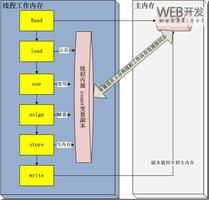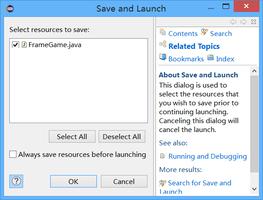什么时候应该使用let {},什么时候只是简单的!= null
你会怎样用更多kotlinic的方式编写下面的代码?什么时候应该使用let {},什么时候只是简单的!= null
var returnValue = ... val s3data = presignedUrl.body()
if (s3data != null) {
val uploadImage = api.uploadImage(s3data.bucketUrl, s3data.awsAccessKeyId, s3data.policy, s3data.key, s3data.signature, body).execute()
if (!uploadImage.isSuccessful) {
crashReporterService.sendIssue("Failed uploading file", "Failed uploading file ${uploadImage.raw()}")
returnValue = Result.FAILURE
} else {
returnValue = Result.SUCCESS
}
} else {
crashReporterService.sendIssue("Failed uploading image", "Error - ${presignedUrl.raw()}")
returnValue = Result.FAILURE
}
return returnValue
我可以用让,但我觉得它使代码更复杂,难以理解
回答:
- 常见共享代码 - 在这种情况下,错误报告和失败结果返回 - 可合并为local function。
- 导致返回的可空性(在这种情况下,
s3data可为空)通常可以用返回的?: elvis operator代替。 - 当反复输入相同的变量(在这种情况下,访问
s3data)时,run块是适当的。如果混淆,请参阅What is a "receiver" in Kotlin? - 正如另一个答案中所述,如果/ else块是Kotlin中的表达式。
因此我会发现下面的实现最ideomatic,受本地函数的参数恰当的命名:
fun foo() { fun failure(p0: String, p1: String) = crashReporterService.sendIssue(p0, p1).let { Result.FAILURE }
val s3data = presignedUrl.body() ?: return failure("Failed uploading image", "Error - ${presignedUrl.raw()}")
val uploadImage = s3data.run { api.uploadImage(bucketUrl, awsAccessKeyId, policy, key, signature, body).execute() }
return if (uploadImage.isSuccessful) {
Result.SUCCESS
} else {
failure("Failed uploading file", "Failed uploading file ${uploadImage.raw()}")
}
}
你的问题是在代码审查接壤,所以你可能也很高兴知道有一个dedicated Stack Exchange network just for that.然而,之前读A guide to Code Review for Stack Overflow users。
回答:
if/else is an expression in Kotlin,所以下面肯定更是Kotlinesque:
val s3data = presignedUrl.body() return if (s3data != null) {
val uploadImage = api.uploadImage(s3data.bucketUrl, s3data.awsAccessKeyId, s3data.policy, s3data.key, s3data.signature, body).execute()
if (!uploadImage.isSuccessful) {
crashReporterService.sendIssue("Failed uploading file", "Failed uploading file ${uploadImage.raw()}")
Result.FAILURE
} else {
Result.SUCCESS
}
} else {
crashReporterService.sendIssue("Failed uploading image", "Error - ${presignedUrl.raw()}")
Result.FAILURE
}
以上是 什么时候应该使用let {},什么时候只是简单的!= null 的全部内容, 来源链接: utcz.com/qa/258177.html






